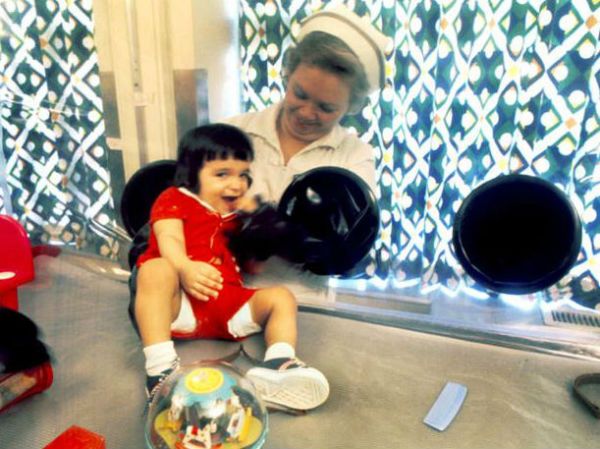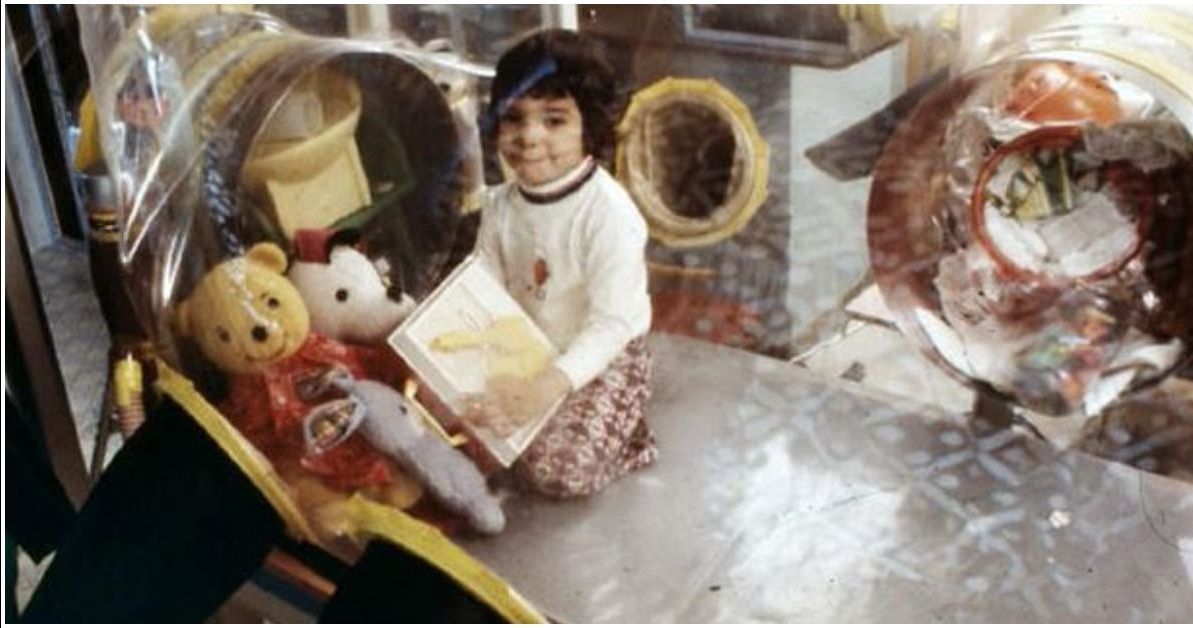Some historical events are so strange, it's almost easier to believe that they never really happened in the first place.
Take the case of David Vetter, the boy from Texas who became known around the world as "the boy in the plastic bubble." Decades later, the idea of a boy growing up in a bubble has found its way into comedy movies and sitcoms, but almost no one remembers Vetter's real story.
The Boy in the Plastic Bubble
Vetter was born on September 21, 1971 with a condition called Severe Combined Immunodeficiency (SCID) and lived for just 20 seconds in the outside world before being placed in a protective bubble.
Because of Vetter's condition, even a very small amount of germs could kill him. His parents, Carol Ann and David J., had already lost a son to SCID as an infant before David was born, and were warned by doctors that if they had another boy, his chance of developing the condition would be one in two.

Vetter's condition, and his treatment, made him famous around the world, but he was only known publicly as "David the boy in the plastic bubble" to protect his family's privacy.
At the time, doctors assumed Vetter would "grow out" of SCID by age two, or that he would live in the bubble until a cure was developed. But life in Vetter's habitat wasn't easy.
Growing Up in Isolation

It took round-the-clock attention from a team of 30 support workers at the Texas Children's Hospital to keep David healthy and safe. While they provided him with toys and books, everything in the bubble (including the air Vetter breathed and the food he ate) had to be sterilized before being put inside, which could take up to a week.
Plus, the habitat needed air compressors running constantly to stay inflated, which made Vetter's room so noisy he could barely speak to anyone.
But as David grew older, he was actually able to explore the world outside his bubble.
Vetter's plastic habitats were designed by NASA engineers, and they didn't stop at just building him a place to sit down.
The team also designed a special spacesuit based on the real thing used by NASA's astronauts. When Vetter turned six, he was able to celebrate by taking his first steps in the outside world. This was also the first time his mother Carol Ann was able to hold her son in her arms.
But just like everything else involving the bubble, putting on the spacesuit was a real chore. There were 24 steps to fasten the suit to Vetter's bubble, and another 28 steps to put it on while keeping the interior sterile.
In the end, David seemed not to like the suit, and only wore it seven times.
Too Big for the Bubble
Instead of exploring the world in a space suit, the bubble boy was just happy to move back home. A special, second habitat was added to his family's house in Dobbin, Texas.
As he got older, Vetter and his parents were willing to try new and risky treatments to cure his SCID. His doctors proposed a bone marrow transplant from his sister Katherine, and the family agreed to take the risk.
But an undetectable amount of the Epstein-Barr virus from his sister's bone marrow infected Vetter with lymphoma, and he died from the cancer just months after the operation in February, 1984.
David Vetter had spent all but 20 seconds of his 12 years on Earth inside a plastic bubble.
Despite how Vetter's life ended in tragedy, research from his time in the bubble has transformed the lives of children with SCID around the world.
Today, a treatment pioneered using Vetter's own blood cells lets SCID patients live normal lives, and 14 out of 16 children with the condition enjoy a normal lifespan.
The Texas Children's Allergy and Immunology Clinic even runs a research and treatment wing named the David Center, in Vetter's honor.
Did you know David's heartbreaking life story?
Revisit more unusual and memorable moments from the 1970s:

